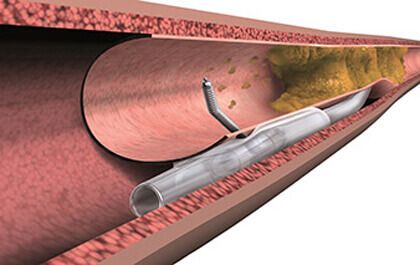Successful rechanneling of a chronic total occlusion (currently around 90%) leads to significant improvement in quality of life and symptom frequency in patients with stable chronic angina compared with optimal medical treatment alone.
 These results are promising and what we ultimately expected, although symptoms, as a primary endpoint in themselves, are in the eye of the storm since the publication of the ORBITA study (with undoubtedly different populations, but ultimately the same endpoint).
These results are promising and what we ultimately expected, although symptoms, as a primary endpoint in themselves, are in the eye of the storm since the publication of the ORBITA study (with undoubtedly different populations, but ultimately the same endpoint).
The clinical value of angioplasty in a setting of chronic total occlusion has not been clearly established through randomized studies. For this reason, the EUROCTO trial randomized patients in order to determine the benefit derived from angioplasty vs. optimal medical treatment in terms of symptom relief.
Read also: Stroke Rate after CABG vs PCI in over 10,000 Patients.
This open-label study included 396 prospective patients who were randomized 2:1 in various European sites. The primary endpoint was improvement in quality of life as assessed by the Seattle Angina Questionnaire (SAQ) between randomization and a 12-month follow-up.
Notably, 52% of patients presented other lesions that were treated before randomization.
An intention-to-treat analysis was performed including 13.4% failed rechanneling procedures in the angioplasty group and 7.3% cross-overs in the medical treatment group.
Read also: Frailty: What Happens When We Are Too Late in Critical Lower Limb Ischemia.
At 12 months, there was significant improvement in the angioplasty group compared with the medical treatment group as regards the angina scale (odds ratio [OR]: 5.23; 95% confidence interval [CI]: 1.75 to 8.71; p = 0.003) and quality of life (OR: 6.62; 95% CI: 1.78 to 11.46; p = 0.007), thus reaching the primary endpoint and turning this into a positive study.
Complete freedom from angina was more frequent in the angioplasty group than in the medical treatment group (71.6% vs. 57.8%; p = 0.008). There were no deaths or peri-procedural infarctions.
At 1 year, traditional major adverse cardiovascular events (death, infarction, stroke) were comparable between groups.
Conclusion
Successful rechanneling of a chronic total occlusion improves quality of life and symptoms in patients with stable chronic angina compared with optimal medical treatment.
Original title: A Randomized Multicentre Trial to Compare Revascularization with Optimal Medical Therapy for the Treatment of Chronic Total Coronary Occlusions. The EUROCTO Trial Investigators
Reference: Gerald S. Werner et al. European Heart Journal (2018) 0, 1-10. Online before print.
Get the latest scientific articles on interventional cardiologySubscribe to our weekly newsletter
We are interested in your opinion. Please, leave your comments, thoughts, questions, etc., below. They will be most welcome.





